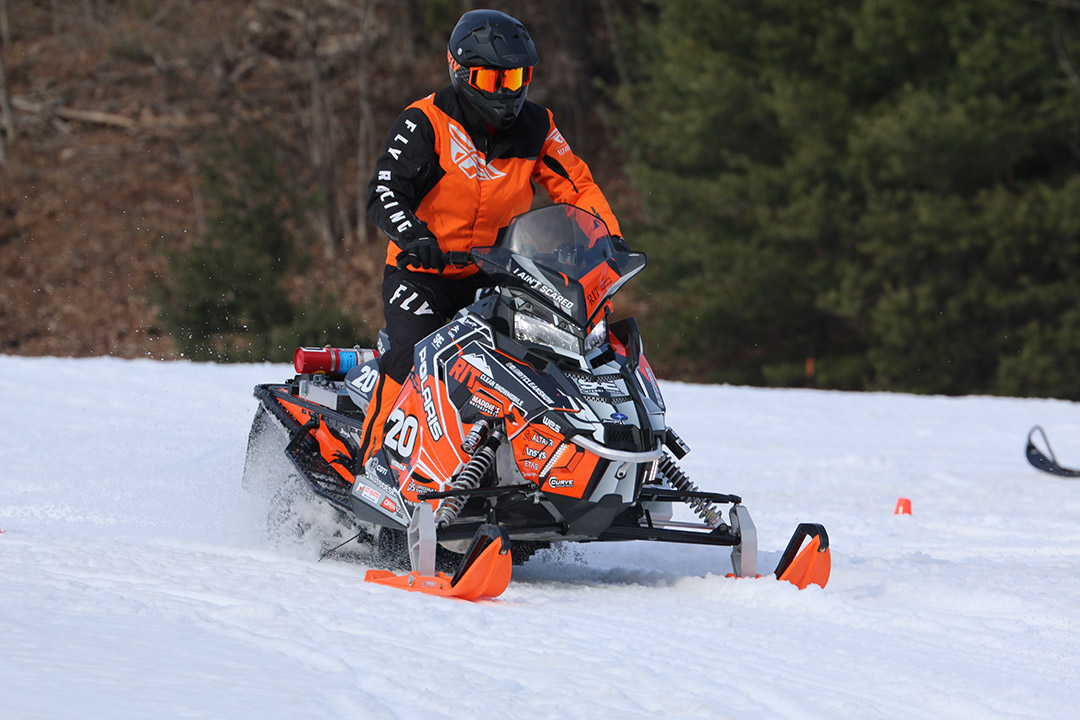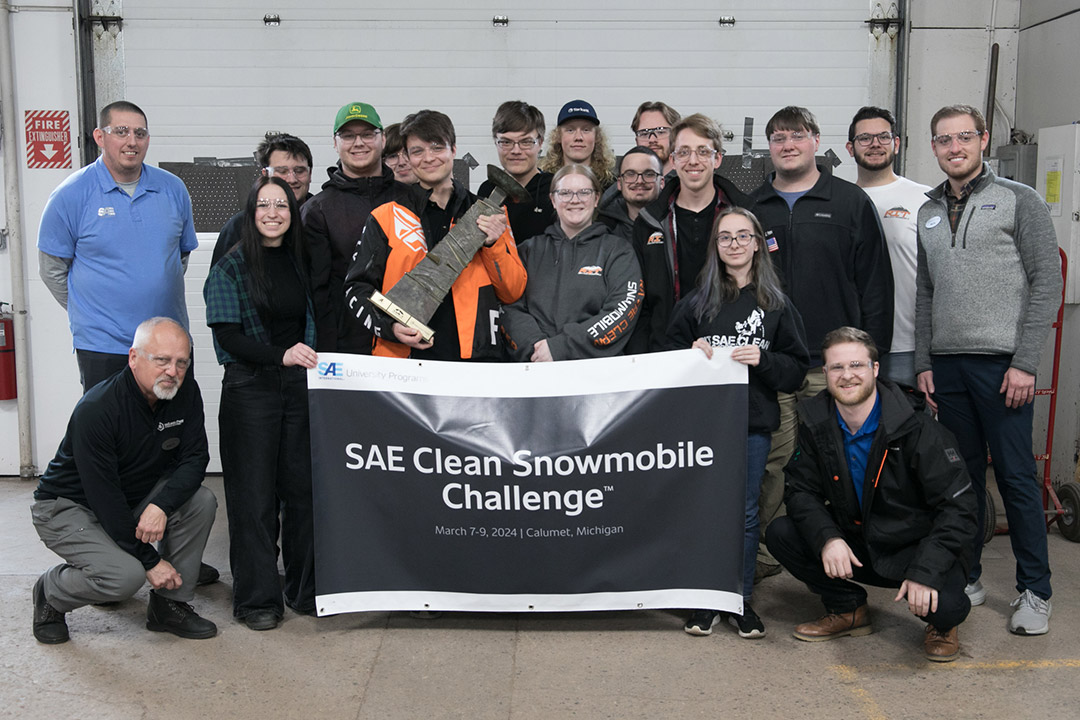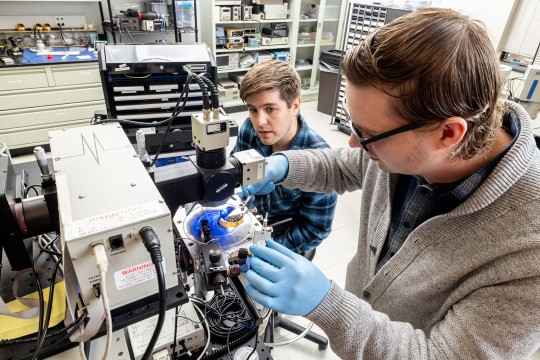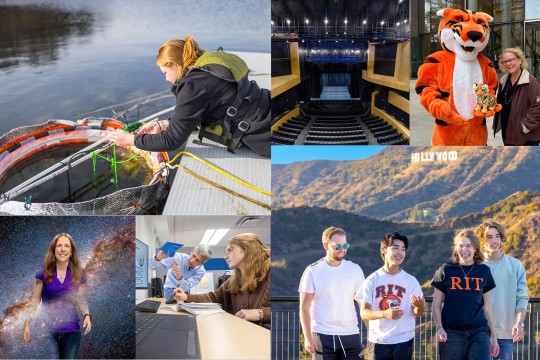Student team wins first SAE clean snowmobile competition
RIT team also recognized for outstanding design
E. Greenfield/RIT
Paxton Diaz, a fourth-year mechatronics major from Granby, Ct., was one of the RIT clean snowmobile team drivers. He also serves as team treasurer.
RIT’s Clean Snowmobile team took first place at the recent SAE Clean Snowmobile Challenge. It was the first time since the team began competing more than 10 years ago that the determined group dashed through the snowy terrain of Michigan to take top honors among 13 teams competing in the annual tournament in March.
“Competition is such an amazing experience. And this year, we were neck-and-neck with another team throughout the challenge,” said Elaine Greenfield, team manager and fifth-year electrical engineering student. “After each of the individual awards were mentioned, they announced RIT had won the overall competition. I just about jumped out of my chair.”
The team shared her excitement. Like Greenfield, several have been a part of the Clean Snowmobile team since their first year at RIT. Students are able to build experience as engineers through a variety of clubs.
“I had never seen a snowmobile before coming to RIT. It looked so cool. On my first day with the club, I was already helping rebuild an engine,” said Greenfield, who is from Westminster, Md. She had worked with her father on vehicles before coming to RIT and knew her way around an internal combustion engine.
Overseeing the club as team manager this year, Greenfield said the group is a mix of majors from engineering but also includes peers from the robotics, cybersecurity, packaging, and information technology degree programs. More than a dozen different majors are represented on the team.
Provided
RIT’s Clean Snowmobile team celebrated its first overall win at a recent competition with several SAE event representatives. Team members are back row, left to right: Jacob Kosko, Michael Gublo, Alex Currie, Justin Pelletier, Christopher Lynde, Hayden McGarry, Kent Leighton, Evan Palmer-Foley, Richard Wituszynski, and Wayne Smith. Front row, left to right: Elaine Greenfield, Paxton Diaz, Morgan Samson, Sarah Taylor.
The Clean Snowmobile Challenge, sponsored by the Society of Automotive Engineers (SAE), is open to universities across the country and Canada. The overall competition goal is to create a snowmobile that is acceptable for use in environmentally sensitive areas, such as National Parks or other pristine areas. Modified snowmobiles are expected to be cleaner, quieter, and more fuel efficient, while maintaining performance capabilities.
“There's a common misconception that a ‘clean’ snowmobile must be electric. However, electric models face significant feasibility challenges, particularly in extremely cold conditions where battery performance is subpar,” said Greenfield, who added that clean refers to improvements on industry standards.
RIT’s team approached this challenge by re-engineering a stock two-stroke snowmobile and implementing substantial enhancements in emissions, noise reduction, and fuel economy.
Competitions are divided into two categories—dynamic and static events. Static events require student teams to present and document the design and build process and involve submission of a design paper, and sales, design, and value benefit presentations. Dynamic events are tests of the snowmobile’s capabilities, similar to SAE Baja and Formula events, that measure a vehicle’s handling, acceleration, noise, weight, emissions, and fuel economy.
The team placed first in the value benefit and sales presentations; second in the design paper and technical presentation category, as well as in objective handling and noise; and third in industry impact, vehicle weight, and acceleration categories.
There are perennial favorites for the Clean Snowmobile Challenge from universities in North Dakota, Idaho, and Quebec, Greenfield said. She added that while many colleges compete, there is also a sense of community because of shared goals—making snowmobiles better and becoming engineers that can contribute to industries and research after graduation.
“The team is a great experience for anyone. Any experience level coming into this team is welcome and will have a role,” said Greenfield, who expects to graduate in May with both a bachelor’s and master’s degree in electrical engineering and begin a doctoral engineering program at the university in fall.







